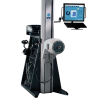
2025 Medicare Cap for Physical Therapy: What PTs and Clinic Leaders Need to Know
Treatment GuidelinesWhether your practice treats a handful of Medicare patients or a large share of your caseload, understanding the 2025 Medicare cap for physical therapy is essential. Even a single patient reaching a threshold can trigger extra documentation, audits, or payment risk.
Medicare’s therapy rules may feel complex, but with the right workflow, you can keep claims clean, maintain compliance, and protect revenue. This guide walks through key thresholds, modifiers, documentation strategies, patient communication, and billing tactics your clinic needs in 2025.
Understanding the 2025 Medicare Therapy Cap Threshold
If you’re new to this, here’s a simple explanation. The Medicare therapy cap is an annual dollar limit that guides how much Medicare will pay for outpatient therapy services. These services include physical therapy (PT), speech-language pathology (SLP), and occupational therapy (OT). Here’s a critical detail: PT and SLP share a combined threshold, while OT has its own separate limit¹.
Originally, a strict “hard cap” meant Medicare would stop paying once a patient hit the limit, regardless of medical need. Many physical therapists are surprised to learn that the hard cap no longer exists. Since 2018, Medicare replaced it with a flexible threshold system that allows medically necessary care to continue beyond the cap when proper documentation is in place².
Here’s what you need to know about the 2025 Medicare cap for physical therapy:
- Combined PT/SLP Threshold: $2,410 per patient in 2025. All PT and SLP services count toward a single limit for each patient in a calendar year¹.
- Separate OT Threshold: Occupational therapy has its own limit ($2,410) and does not count toward the PT/SLP total¹.
- Targeted Medical Review Threshold: $3,000 triggers potential manual review, in effect through 2027².
- KX Modifier: Must be used for PT/SLP services exceeding the $2,410 threshold to attest that care is medically necessary¹.
Understanding this framework—the shared PT/SLP threshold, separate OT limit, and review trigger—is key for accurate billing and smooth coordination across providers.
Applying the KX Modifier Correctly
When a patient’s combined PT and SLP services reach $2,410, the KX modifier must be added to claims. This communicates to Medicare that continued therapy is medically necessary¹.
Best Practices:
- Use only when justified: Apply the KX modifier at the $2,410 threshold only when it is medically necessary and well supported. The additional care must serve a clear therapeutic purpose beyond patient convenience and demonstrate the potential to help the patient achieve their functional goals.
- Support with documentation: Progress notes should show treatment strategy, patient response, and anticipated functional outcomes.
- Coordinate for multi-provider care: For patients seeing both PT and SLP, establish a protocol to determine who applies KX first. If you cannot access another provider’s records, track your own services carefully and document necessity clearly.
- Defensive documentation: For high-utilization cases or complex diagnoses, include objective measures, frequency justification, and functional progress. This reduces audit risk and supports potential appeals.
Tracking the PT/SLP Threshold and Multi-Provider Coordination
Monitoring cumulative therapy spending is critical to avoid denials or audit triggers:
- Real-time tracking: Use your EMR or billing system to track therapy dollars per patient. Set alerts when patients approach $2,200, giving staff time to prepare KX documentation¹.
- Workflow for shared thresholds: In multi-provider cases, keep clear notes on each provider’s contributions. If coordination is limited, document thoroughly and flag claims that approach the combined threshold.
- Unexpected threshold crossings: Review notes, confirm medical necessity, apply KX modifiers, and communicate promptly with patients.
- Audit-ready records: Medicare can review claims months later, so maintain organized documentation for all PT and SLP sessions².
ABN and GA Modifiers Explained
ABNs and GA modifiers protect both patients and clinics when therapy might not be covered²:
- ABN (Advance Beneficiary Notice): Given before services, it explains Medicare may not pay. The patient acknowledges potential financial responsibility.
- GA Modifier: Appended to the claim after issuing an ABN, signaling Medicare that the patient was informed and accepted responsibility if the claim is denied.
Using ABNs and GA modifiers is particularly important when continuing therapy beyond thresholds or for services outside typical coverage.

Navigating the Targeted Medical Review Threshold
Claims over $3,000 in combined PT/SLP services may trigger a Targeted Medical Review². Historically, about 10–15% of claims above this amount are selected.
Red flags auditors watch for:
- Sparse or generic documentation
- Treatment frequency or intensity inconsistent with clinical notes
- Weak linkage between sessions and functional goals
- Lack of progressive notes demonstrating improvement
Workflow tips for clinics:
- Allocate 5–10 extra minutes per patient per week near the threshold for documentation.
- Conduct regular chart audits to train staff and identify gaps.
- Maintain detailed progress notes and functional measures for potential appeals.
Advanced billing strategies:
- Code accurately for complex diagnoses and high-utilization cases.
- Tie each session to documented functional outcomes.
- Keep appeals-ready documentation for claims exceeding thresholds.
Communicating the Threshold to Patients
Clear patient communication is essential to manage expectations and financial responsibility:
- Explain coverage limits:
“Medicare covers therapy up to a certain annual amount. We expect you’re close to that limit. If we continue therapy, we’ll document medical necessity, and you may receive a notice if services exceed coverage.”
- Use checklists or toolkits: Provide staff with scripts, FAQ sheets, or patient handouts to ensure consistent messaging¹.
- Address anxiety proactively: Reassure patients that therapy can continue when medically necessary, and they’ll be informed of any out-of-pocket costs in advance.

Revenue Protection Playbook
A structured approach ensures clinics stay compliant while protecting revenue:
- Automated alerts: EMR flags for approaching thresholds reduce missed KX modifiers.
- Standardized workflows: Checklists for documentation, ABN/GA use, and audit-readiness streamline staff processes.
- High-utilization oversight: Track patients exceeding $2,410 closely and maintain defensive documentation.
- Financial sustainability focus: Reduces claim denials, recoupments, and administrative surprises.
Key Takeaways for Physical Therapists
- 2025 Medicare cap for PT + SLP: $2,410 combined, OT tracked separately.
- Use KX modifier for therapy exceeding thresholds, backed by clear documentation.
- Claims over $3,000 may trigger review; allocate extra time for audit-ready summaries.
- Track patient spending, coordinate across providers, and communicate coverage and financial responsibility.
- ABN/GA forms protect patients and clinics when services may not be covered.
- Implement toolkits, checklists, and workflows to maintain revenue and compliance.
By following these strategies, clinics can continue medically necessary therapy, minimize denials, and protect both patients and revenue.
Morgan Hopkins, DPT, CMTPT is a Physical Therapist and freelance healthcare writer. She spent over eight years treating patients in outpatient orthopedics before transitioning to medical writing. Her clinical specialties include intramuscular dry needling, dance medicine, and sports medicine. Morgan is extremely passionate about holistic wellness, preventative care and functional fitness and uses writing to educate and inspire others.






